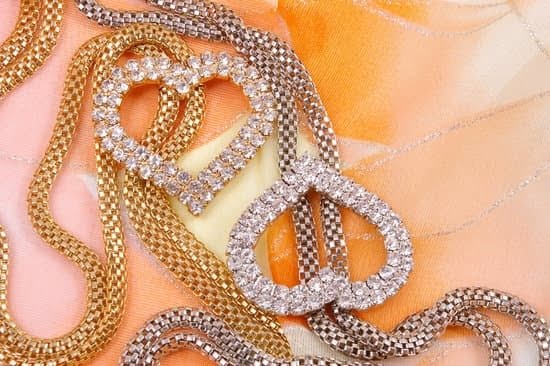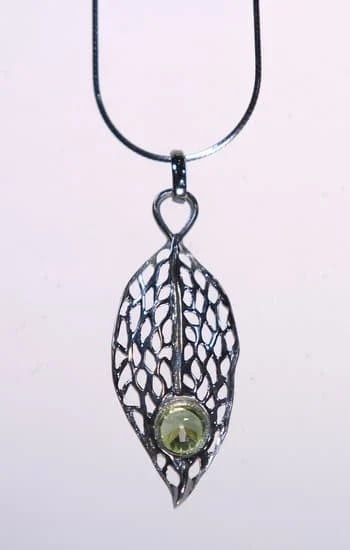Diamonds are highly sought after gemstones, prized for their beauty and rarity. Because of their high value, it’s essential to have a reliable tool that can accurately detect diamonds in jewelry. This article explores the various tools and techniques used in diamond detection, as well as the science behind distinguishing natural diamonds from lab-grown ones.
The process of detecting diamonds in jewelry is crucial for several reasons. Firstly, it ensures that consumers are getting what they paid for when purchasing diamond jewelry. With the advancement of technology, there has been an increase in counterfeit diamonds flooding the market. Without proper detection methods, unsuspecting buyers may unknowingly purchase fake or lab-grown diamonds instead of authentic natural ones.
Secondly, diamond detection is essential for assessing the value and quality of a diamond piece. Differentiating between natural and lab-grown diamonds is not just a matter of authenticity but also affects the market price significantly. The rarity and origin of a diamond can greatly impact its worth and desirability.
Lastly, detecting diamonds accurately plays a vital role in preserving consumer trust within the jewelry industry. By using reliable tools and techniques to assess the authenticity of diamonds, jewelers can maintain their reputation while giving customers confidence in their purchases.
In this article, we will delve into the science behind diamond detection and explore different tools utilized in this process. We will examine both traditional diamond testers that have been in use for years and newer advanced technologies such as X-ray fluorescence (XRF) and spectroscopy.
Furthermore, we will discuss portable options available for professionals and even consumers who wish to determine if their diamond jewelry is genuine or not. Whether you’re a jeweler or an interested buyer looking to make an informed decision when investing in diamond jewelry, understanding how these tools work is crucial to ensure accuracy and integrity in assessing diamonds’ authenticity.
The Science Behind Diamond Detection
The science behind diamond detection involves the exploration of different tools and techniques that are used to distinguish between natural and lab-grown diamonds. There are several methods available for detecting diamonds, each with its own advantages and limitations. This section will delve into these various tools and techniques, providing an in-depth understanding of how they work and their effectiveness in diamond detection.
One commonly used tool for diamond detection is the traditional diamond tester. These testers rely on thermal conductivity to differentiate between diamonds and other gemstones. Diamonds have higher thermal conductivity than most other gemstones, causing them to disperse heat more quickly when placed in contact with the tester’s probe.
By measuring the rate at which heat is transferred, these testers can determine whether a stone is a diamond or not. However, this method has limitations, as it cannot distinguish between natural and lab-grown diamonds since both have similar thermal conductivity.
More advanced tools such as X-ray Fluorescence (XRF) and spectroscopy offer improved accuracy in diamond detection. XRF works by bombarding the material with high-energy photons, causing it to emit characteristic X-rays that can be analyzed to determine its composition. Spectroscopy, on the other hand, measures the interaction between light and matter to identify specific elements within a gemstone. Both methods can provide valuable information about a diamond’s authenticity and composition, allowing for more precise identification.
| Tool/Technique | Description |
|---|---|
| Traditional Diamond Tester | Rely on thermal conductivity to differentiate between diamonds and other gemstones. |
| X-ray Fluorescence (XRF) | Bombards the material with high-energy photons and analyzes emitted X-rays for composition analysis. |
| Spectroscopy | Measures the interaction between light and matter to identify specific elements within a gemstone. |
In the next section, we will explore the emergence of diamond identification devices that offer portable options for professionals and even consumers. These devices have revolutionized diamond detection by providing convenience and accessibility without compromising accuracy.
Understanding the Difference Between Natural and Lab-Grown Diamonds
Lab-grown diamonds have become increasingly popular in the jewelry industry. As a result, it has become important for consumers and professionals to understand the difference between natural diamonds and lab-grown diamonds. This section will explore the key distinctions between these two types of diamonds.
One of the main differences between natural and lab-grown diamonds is their origin. Natural diamonds are formed deep within the Earth’s mantle over billions of years through intense heat and pressure.
On the other hand, lab-grown diamonds are created in a controlled environment using various techniques such as high pressure, high temperature (HPHT) or chemical vapor deposition (CVD). The growth process of lab-grown diamonds replicates the same conditions that naturally occur underground, but at an accelerated rate.
Another difference lies in their composition. Both natural and lab-grown diamonds are made up of carbon atoms arranged in a crystal lattice structure. However, lab-grown diamonds may contain additional trace elements due to the specific growth conditions employed during their creation.
Despite these differences, lab-grown diamonds possess the same physical and chemical properties as natural ones. This means they share similar hardness, refractive index, dispersion, and thermal conductivity characteristics. In fact, without specialized equipment or expertise, it can be extremely challenging to visually differentiate between a natural diamond and a lab-grown diamond.
| Natural Diamonds | Lab-Grown Diamonds |
|---|---|
| Formed over billions of years deep within the Earth’s mantle | Created in controlled environments through accelerated processes |
| Purity levels can vary with inclusion of trace elements | Purity levels can be more controlled due to the growth process |
| Chemical and physical properties are identical to lab-grown diamonds | Chemical and physical properties are identical to natural diamonds |
Understanding the differences between natural and lab-grown diamonds is crucial when it comes to making informed decisions about diamond jewelry purchases. Consumers should be aware of the origin of the diamond they are considering, as this can have an impact on its value and rarity. Additionally, professionals in the diamond industry must be equipped with the knowledge and tools necessary to accurately identify and differentiate between these two types of diamonds.
Section on the Traditional Diamond Tester
The traditional diamond tester is a popular tool used in the jewelry industry to detect diamonds. This handheld device works based on the principle of thermal conductivity. It consists of a small probe that is heated up and pressed against the gemstone being tested. The heat from the probe is transferred differently between diamonds and other materials, allowing the tester to determine if a diamond is present.
The traditional diamond tester has some limitations that jewelry buyers and professionals should be aware of. Firstly, it can only detect natural diamonds and does not work with lab-grown or synthetic diamonds. This is because lab-grown diamonds have the same thermal conductivity as natural diamonds, making them indistinguishable using this method alone.
Additionally, the traditional diamond tester may give false positives or negatives in certain situations. For example, certain gemstones like moissanite have similar thermal conductivity to diamonds and may result in a false positive result. In contrast, certain colored diamonds or heavily included stones may not exhibit enough thermal conductivity to register as a diamond on the tester.
It’s important for consumers to understand these limitations when using a traditional diamond tester as their sole tool for diamond detection. To overcome these challenges, advanced technologies such as X-ray Fluorescence (XRF) and spectroscopy have emerged in recent years, offering more reliable and comprehensive results in diamond testing. These advanced tools will be explored further in subsequent sections of this article.
The Advantages of Advanced Diamond Detection Tools
Diamond detection has become increasingly important in the jewelry industry, as the market is flooded with lab-grown diamonds and synthetic gemstones that closely resemble natural diamonds. In order to ensure transparency and protect consumers, advanced tools and techniques have been developed to detect and differentiate between natural and lab-grown diamonds. Two commonly used advanced diamond detection tools are X-ray Fluorescence (XRF) and Spectroscopy.
X-ray Fluorescence (XRF) is a non-destructive technique that uses X-rays to determine the elemental composition of a material. This tool is particularly useful for identifying the presence of synthetic elements in diamonds.
By analyzing the light emitted when a diamond is exposed to X-rays, XRF can quickly determine if a diamond is natural or lab-grown based on its elemental composition. The advantage of using XRF is that it can provide accurate results without damaging the diamond or requiring any additional testing.
Spectroscopy is another advanced diamond detection tool that utilizes light analysis to identify the unique optical properties of diamonds. It works by measuring how light interacts with a diamond, including factors such as its absorption, transmission, and reflection.
Spectroscopic techniques like Raman spectroscopy and photoluminescence spectroscopy can provide valuable information about a diamond’s characteristics, such as its color origin and treatment history. One of the advantages of spectroscopy is its ability to detect treatments or alterations made to enhance a diamond’s appearance.
These advanced diamond detection tools offer several advantages over traditional methods like diamond testers. While traditional testers only rely on thermal conductivity or electrical resistivity to distinguish between natural and lab-grown diamonds, XRF and Spectroscopy provide more comprehensive analysis by examining elemental composition and optical properties. These tools are also able to identify treatments or enhancements made on diamonds, providing further insight for buyers.
The Emergence of Diamond Identification Devices
The emergence of diamond identification devices has revolutionized the process of detecting diamonds in jewelry, providing portable options for both professionals and consumers. These portable devices offer convenience, accuracy, and ease of use, making them an essential tool in the diamond industry.
Portable Diamond Testers
One of the most popular options among professionals and consumers is the portable diamond tester. These devices utilize electrical conductivity to determine whether a gemstone is a diamond or an imitation. Portable diamond testers work by measuring how well a stone conducts heat or electricity, as diamonds have unique thermal and electrical properties that distinguish them from other gemstones.
These testers are compact and lightweight, making them suitable for on-the-spot testing at jewelry stores or even while traveling. They are relatively easy to operate; users simply need to ensure that the device is properly calibrated before each test. However, it’s important to note that while these devices are effective in distinguishing diamonds from imitations made of materials such as cubic zirconia or moissanite, they may not be able to differentiate between natural and lab-grown diamonds.
Diamond Identification Devices
Another category of diamond identification devices that have gained popularity are handheld instruments that utilize advanced technologies such as X-ray Fluorescence (XRF) and spectroscopy. These tools provide more comprehensive analysis and can detect not only the presence of diamonds but also provide valuable information about their origins.
XRF machines work by bombarding a sample with X-rays and measuring the energy emitted back by the atoms present in the sample. This allows for accurate identification of various elements within a diamond, including trace elements that can help determine its origin. Spectroscopy-based devices analyze the light spectrum produced when a light source is shined onto a gemstone. By comparing this spectrum with known spectra from different types of diamonds, these devices can identify different types accurately.
These advanced diamond identification devices offer greater accuracy than portable diamond testers and are often used by professionals in gemological laboratories or high-end jewelry stores. However, they are also becoming increasingly accessible to consumers who desire an extra level of assurance when purchasing diamond jewelry.
Overall, the emergence of portable diamond identification devices has democratized access to diamond detection technology, helping both professionals and consumers make informed decisions when it comes to buying or selling diamonds. These devices provide convenience, accuracy, and peace of mind by offering quick and reliable results on the authenticity and quality of a diamond. As technology continues to advance, it will be interesting to see how these tools evolve further in the future.
The Role of Gemologists and Diamond Experts in Detecting Diamonds in Jewelry
Gemologists and diamond experts play a crucial role in the detection of diamonds in jewelry. These professionals have extensive knowledge and experience in identifying and evaluating diamonds, ensuring that consumers can make informed decisions when purchasing diamond jewelry.
One of the primary responsibilities of gemologists and diamond experts is to authenticate diamonds by verifying their origin, quality, and characteristics. They use a combination of tools, techniques, and their expertise to examine the physical properties of diamonds. This includes assessing factors such as color, clarity, cut, and carat weight. Gemologists also examine the presence or absence of certain inclusions or imperfections that are indicative of natural or lab-grown diamonds.
To detect diamonds in jewelry accurately, gemologists often use specialized tools alongside their knowledge. Traditional instruments such as loupes (magnifying lenses) and microscopes are commonly used for examining the internal features and external attributes of diamonds. These tools help identify distinct patterns, unique characteristics, and potential treatments that may affect the value or authenticity of the diamond.
Furthermore, gemologists may also use advanced technologies such as spectroscopy and X-ray fluorescence (XRF) to analyze the composition of a diamond. Spectroscopy can provide information about a diamond’s molecular structure and elemental composition by measuring its light absorption properties. XRF helps identify specific elements present in a diamond based on their fluorescent emissions when exposed to X-rays.
Exploring the Future of Diamond Detection
With the advancement of technology, the future of diamond detection is constantly evolving. One exciting development in this field is the emergence of AI-powered tools and technological innovations that aim to revolutionize the way diamonds are detected in jewelry.
AI-Powered Tools
Artificial Intelligence (AI) has made significant strides in various industries, and it is now being incorporated into diamond testing devices. These AI-powered tools utilize machine learning algorithms to analyze and identify diamonds based on their unique optical properties, such as fluorescence, dispersion, and refractive index. By training the AI models with extensive datasets containing information about different types of diamonds, these tools can accurately detect and differentiate natural diamonds from lab-grown ones.
One such example is the integration of computer vision technology into diamond detection devices. These devices use high-resolution cameras and AI algorithms to capture images of a diamond’s facets and compare them to a database of known diamond patterns. Through pattern recognition and analysis, these AI-powered tools can quickly determine if a diamond is natural or lab-grown.
Technological Innovations
In addition to AI-powered tools, there are several other technological innovations that show promise in revolutionizing diamond detection. For instance, advancements in spectroscopy have allowed for more precise analysis of a diamond’s chemical composition. Spectroscopic techniques can provide valuable information about the presence of certain elements or impurities that are characteristic of either natural or lab-grown diamonds.
Moreover, developments in laser-induced breakdown spectroscopy (LIBS) have enabled gemologists to analyze diamonds at an atomic level. By subjecting a diamond to intense laser pulses, LIBS can measure the elemental composition within each layer of a diamond’s structure. This level of detailed analysis helps experts distinguish between natural and lab-grown diamonds by identifying specific trace elements or impurities present only in one type.
As technology continues to advance, we can expect more sophisticated tools and innovations in diamond detection to emerge. These advancements will not only benefit gemologists and professionals in the jewelry industry but also empower consumers to make more informed decisions when purchasing diamond jewelry.
Diamond Testing Methods
In the world of diamond detection, there are various tools and techniques available to determine the authenticity and quality of diamonds in jewelry. Each method has its own advantages and limitations, which can significantly impact the accuracy of the results. This section will provide an overview of some commonly used diamond testing methods, highlighting their strengths and weaknesses.
One popular method for diamond testing is thermal conductivity testing. This technique utilizes the unique thermal properties of diamonds to differentiate them from other gemstones. Diamonds have one of the highest thermal conductivities among all materials, allowing them to rapidly dissipate heat.
Thermal conductivity testers measure how quickly a gemstone absorbs heat and transfers it through its structure. If a stone exhibits high thermal conductivity, it is likely a diamond. However, this method cannot distinguish between natural diamonds and lab-grown diamonds since both types possess similar thermal properties.
Another widely used tool for diamond detection is ultraviolet (UV) fluorescence testing. Natural diamonds often display blue fluorescence under long-wave UV light due to the presence of trace elements like boron within their crystal lattice structure. This test involves exposing the gemstone to UV light and observing its fluorescence response.
If the stone emits a strong blue fluorescence, it is likely a natural diamond. On the other hand, lab-grown diamonds may exhibit weak or no fluorescence since they are grown under controlled conditions without impurities.
Additionally, advanced technologies such as X-ray Fluorescence (XRF) and spectroscopy have revolutionized diamond testing in recent years. XRF devices use X-rays to excite atoms in a sample, causing them to emit characteristic fluorescent X-rays that can be analyzed to identify specific elements present in the gemstone.
Spectroscopy techniques involve analyzing the interaction between light and matter to identify chemical compositions accurately. Both methods offer non-destructive analysis capabilities and can provide detailed information about the composition and origin of diamonds.
Overall, each diamond testing method has its own advantages and limitations. Some techniques are more suitable for professionals in gemology laboratories, while others are designed for consumer use. It is crucial to understand these differences and choose the appropriate tool or technique based on specific requirements, budget, and desired level of accuracy. By utilizing a combination of different methods and consulting with diamond experts or gemologists, individuals can make informed decisions when purchasing diamond jewelry.
Conclusion
In conclusion, being able to detect diamonds in jewelry is crucial for making informed decisions when purchasing diamond products. The article has explored different tools and techniques used in the science of diamond detection, including traditional diamond testers, advanced tools like X-ray Fluorescence (XRF) and spectroscopy, and portable diamond identification devices. It has also emphasized the important role played by gemologists and diamond experts in accurately identifying diamonds in jewelry.
One of the limitations of traditional diamond testers is that they can only distinguish between natural and lab-grown diamonds based on their thermal conductivity. This means that they cannot provide information about other characteristics such as color or clarity. However, advanced tools like XRF and spectroscopy offer a more comprehensive analysis of a diamond’s composition, allowing for a more accurate identification.
The emergence of portable diamond identification devices has made it easier for both professionals and consumers to detect diamonds in jewelry. These devices are compact, easy to use, and provide quick results. They are particularly useful when buying diamonds from individual sellers or at estate sales where professional assistance might not be readily available.
Looking ahead, technological innovations including AI-powered tools have the potential to revolutionize the field of diamond detection even further. AI algorithms can analyze vast amounts of data quickly and accurately, making them valuable aids in identifying diamonds with greater precision.
Ultimately, by understanding the different tools and techniques used in detecting diamonds in jewelry, consumers can make more informed choices when purchasing these precious gems. Whether relying on traditional testers or investing in advanced technologies, it is crucial to consult with gemologists or expert advice to ensure that what you are getting is indeed a genuine diamond.
Frequently Asked Questions
What tool is used to identify diamonds?
The tool that is commonly used to identify diamonds is called a loupe. A loupe is a small magnification device, typically with a 10x magnification, that jewelers use to closely examine the characteristics of a diamond. By inspecting the color, clarity, and cut of the stone under high magnification, jewelers can make preliminary assessments about its authenticity and quality.
What do jewelers use to test diamonds?
Jewelers use various tools to test diamonds and verify their authenticity. One commonly used tool is a diamond tester, also known as an electronic diamond tester or a thermal conductivity probe.
These testers work by measuring the thermal conductivity of gemstones. As diamonds have extremely high thermal conductivity compared to most other gemstones, the tester can differentiate between real diamonds and imitations by detecting variations in heat transfer.
Do jewelers have diamond testers?
Yes, many professional jewelers do possess diamond testers as part of their standard toolkit. Diamond testers are portable devices that provide quick and non-destructive assessments regarding the authenticity of diamonds.
By swiftly testing loose stones or even mounted jewelry, jewelers can efficiently confirm whether the gems they are working with are genuine diamonds or potential imitations such as cubic zirconia or moissanite. However, it is worth noting that while diamond testers are helpful tools for initial identification purposes, they may not substitute for more comprehensive testing methods like professional grading labs that employ advanced instruments and expert gemologists for conclusive evaluations of diamonds’ quality attributes.

Welcome to my jewelry blog! My name is Sarah and I am the owner of this blog.
I love making jewelry and sharing my creations with others.
So whether you’re someone who loves wearing jewelry yourself or simply enjoys learning about it, be sure to check out my blog for insightful posts on everything related to this exciting topic!





